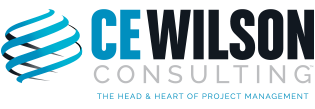Project management is more than just a beneficial skill; it’s a core competency that benefits…

Engage Your Workforce in Designing a Process Solution
Has this ever happened to you?
Your son or daughter is sick and you take them to the emergency room. The nightmare continues as you are asked to fill out tons of paperwork. Information is cloudy as you are stressed over the health of your child. After 30 minutes you finally get through the paperwork, and you are told to have a seat in the lobby where someone will be with you shortly. Shortly turns out to be an hour, all the while your son or daughter is in obvious pain. You finally get called, and your stress is somewhat relieved as you assume your child will be seen immediately by an expert who will diagnose your child’s illness, and relief will soon follow. Wrong, your child is seen for vital checks, but only to wait in a different room and you are told the Dr. will be in shortly. After 40 long minutes, the doctor finally arrives and checks your vitals again only to tell you more tests and x-rays are needed. After several hours, you finally get the answer you were waiting to get several hours ago and you head home tired and exhausted as if you did a full day of work. What you have just experienced was an inefficient process that occurs quite often in several different industries.
Consider this very different scenario below.
You arrive at the hospital and you are immediately seen by a nurse who documents your symptoms, immediately takes vitals, and prints off a list of additional things that will happen throughout the course of your emergency visit. You are in and out of the hospital in less than 3 hours. What changed from your last visit? The process. The hospital made notable changes to their intake process; the process was streamlined and much more focused on keeping the patient informed, giving timely information, and better coordination between doctors and technicians. In addition, you are less stressed and feel at ease by the information received in a timely manner. The hospital has evidently engaged their workforce in designing a process solution that works for both the patient and the staff.
Benefits of Engaging Your Workforce in Designing a Process Solution
As stakeholders in the success of your business, your staff can bring tremendous value to developing and designing a process solution. The benefits of staff engagement are significant and can include:
- Greater buy-in and willingness to execute a newly designed process.
- An increased likelihood that the full benefits of the new process will be realized.
- Improved customer experience because the staff, who interface with customers daily, will bring their insight and input during process design discussions.
In contrast, the consequence of not engaging staff is that they may not fully embrace and champion the goals and vision of the business; therefore, the performance or execution of newly established processes will be marginal and compromised at best.
Guidelines To Ensure a Successful Process Design
Although engaging staff in this critical business activity is essential, it’s not as simple as it may seem. We recommend the following guidelines to help ensure that your next process design effort is successful:
- Provide sustained, visible support (from top management) for staff engagement by sharing the business need, goals and vision for the process design initiative.
- Encourage and welcome open, honest feedback in the form of reporting errors, problems and waste. Also encourage suggestions and ideas for improvement. This may sound like an obvious guideline, however, if soliciting feedback has not been an ongoing practice in your organization, chances are it’s not a part of your culture. So, don’t be surprised by staff reluctance to share their thoughts, initially. They may need some time to get used to this new way of doing business.
- Train staff to identify the source or root cause of a problem. This is an important problem-solving skill that enables your staff to determine the best possible solutions.
- Identify and clarify who owns the process. This is necessary to avoid staff conflicts and to ensure that everyone knows who is accountable for ensuring the most efficient process given the resources and limitation constraints. To be clear, the process owner is not necessarily responsible for process execution, but for the strategic design, documentation and maintenance of the process to achieve business objectives.
- Externally validate input from staff who are the Subject Matter Experts (SME) to ensure that documented processes are not merely personal preferences.
- Consider hiring an experienced, professionally trained ‘process expert’ as your Business Analyst. This Consultant should be well versed in the latest techniques and strategies to help you engage your team to design a business process solution, more quickly.
Check For Engagement Characteristics:
As you reflect on the guidelines above, how will you know if your workforce is engaged? The following qualities represent characteristics of a fully engaged workforce:
 Do you have additional process design tips to share? If so, leave a comment.
Do you have additional process design tips to share? If so, leave a comment.
Read more about Process Design:
Looking for Inefficiencies in Your Business
Designing a Process Before Implementing a Tool
Chrystal Richardson is Managing Partner of CE Wilson Consulting, a project management and business efficiency consulting firm that has managed projects for technology, mining, medical and manufacturing clients since 2001.




